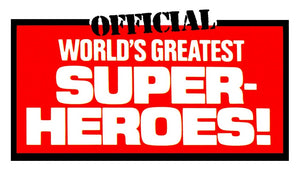Belts
For belts there's a few ways to accomplish this. First for what I found best is if you own a Cricut, you can use "Faux Leather" or "Faux Suede" with the "Deep Cut" blade and the "Strong Mat" or "Fabric Mat".
For Leather I use the setting in the software Genuine Leather and for suede I use teh Deep Cut Blade. When placing the leather on the mat, you want the leather side face down so the mat can properly grip and cut it. In the Cricut software, set the material to "Genuine Leather" from the materials list.
For Suede using the "Fine Point Blade" (the one that comes with the machine) I set the dial on the machine to "Cardstock" and I use the "StandandGrip Mat" (the green one) I am able to successfully and easily cut the faux suede without changing my blade and having to re-collaborate my machine or use an X-Acto knife to cut parts that didn't cut all the way through.
I set the height of the product in th3 software on the canvas to .313 (9/32 inches). It is more than 1/4" but less than 5/16. This is the exact match for my Mister Fantastic and Thing suits when I measuerd them.
The Thing Belt Length = 5 1/4" with sewn-on snaps
Mr Fantastic/Male Belt Length = 4 1/4" with sewn-on snaps
All Belt Height = 9/32" or .313
So for the best way of making belt lopps I found is using matte vinyl and cutting them with a cricut machine. Another way is to use elastic flat cord, available through Amazon. The width should be 1/8 of an inch and the height should be 1 inch for every loop. This height will provide enough slack to have it overlap itself to make a secure connection behind the belt on the inside. To make sure the loops hold together, I used Brush-on Krazy Glue where the loops overlap one another. When its done you should have 3 loops on one side of the buckle and two on the other.
Loop Width = 1/8 inch
Loop Height = 1 inch
Loop Spacing = 1/2 inch
Belt Buckles
This is tricky. depending on the buckle style you are going for. You can use something known as Doll Buckles. Make sure you match the height. Those will give you the metal square box around the belt. Another way I discovered accidently and I will show off with my custom George Reeves is you can use a Paper Fastner. Available in Brass finish, its a thru hole fastner with the other side having two ends that spread apart and flaten holding the rivet brass head in place. In a 1/9 scale belt it makes a great buckle. The last idea is to use vinyl and cut the buckle style out using permanent or removable vinyl. The height should be the same as the buckle and the width should be determined by the style you are trying to achieve.
Belt Fastner
This topic is how we get the belt to stay together and stay on the body. One idea is if you are replacing a Mister Fantasic Belt or thing Belt, they were sewn-on at the snap with the snap sitting on the belt. If you are just adding a belt using faux suede or leather you can also stil use the snaps but then you have to be sure of your positioning because if it is too loose, the belt will slide down the figure. The route I'm going is with 3M dual locking fastners. They are small and lock into each other much like velcro only both sides are stiff. They have a strong adhesive that takes 24 hours to fully dry. With this method I can pull tight the belt and secure it better. because if it is too loose, the belt will slide down the figure. The route I'm going is with 3M dual locking fastners. They are small and lock into each other much like velcro only both sides are stiff. Teh have a strong adhesive that takes 24 hours to fully dry. With this method I can pull tight the belt and secure it better.
Length = 4 1/4"
Height = 9/32"


































